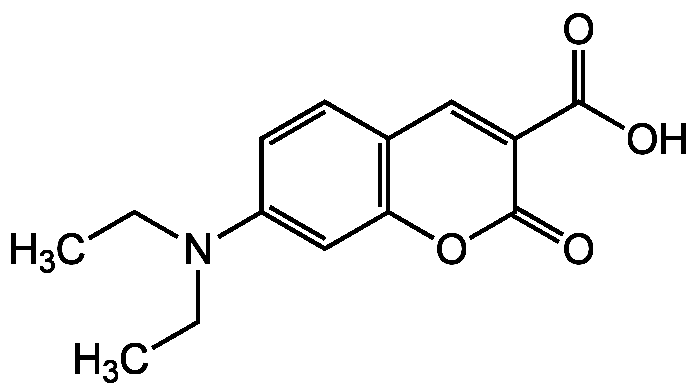7-Diethylaminocoumarin-3-carboxylic acid
Product Code:
CDX-D0036
CDX-D0036
Regulatory Status:
RUO
RUO
Shipping:
Ambient
Ambient
Storage:
+4 °C
+4 °C
No additional charges, what you see is what you pay! *
| Code | Size | Price |
|---|
| CDX-D0036-M100 | 100 mg | £113.00 |
Quantity:
| CDX-D0036-M200 | 200 mg | £159.00 |
Quantity:
| CDX-D0036-G001 | 1 g | £630.00 |
Quantity:
Prices exclude any Taxes / VAT



